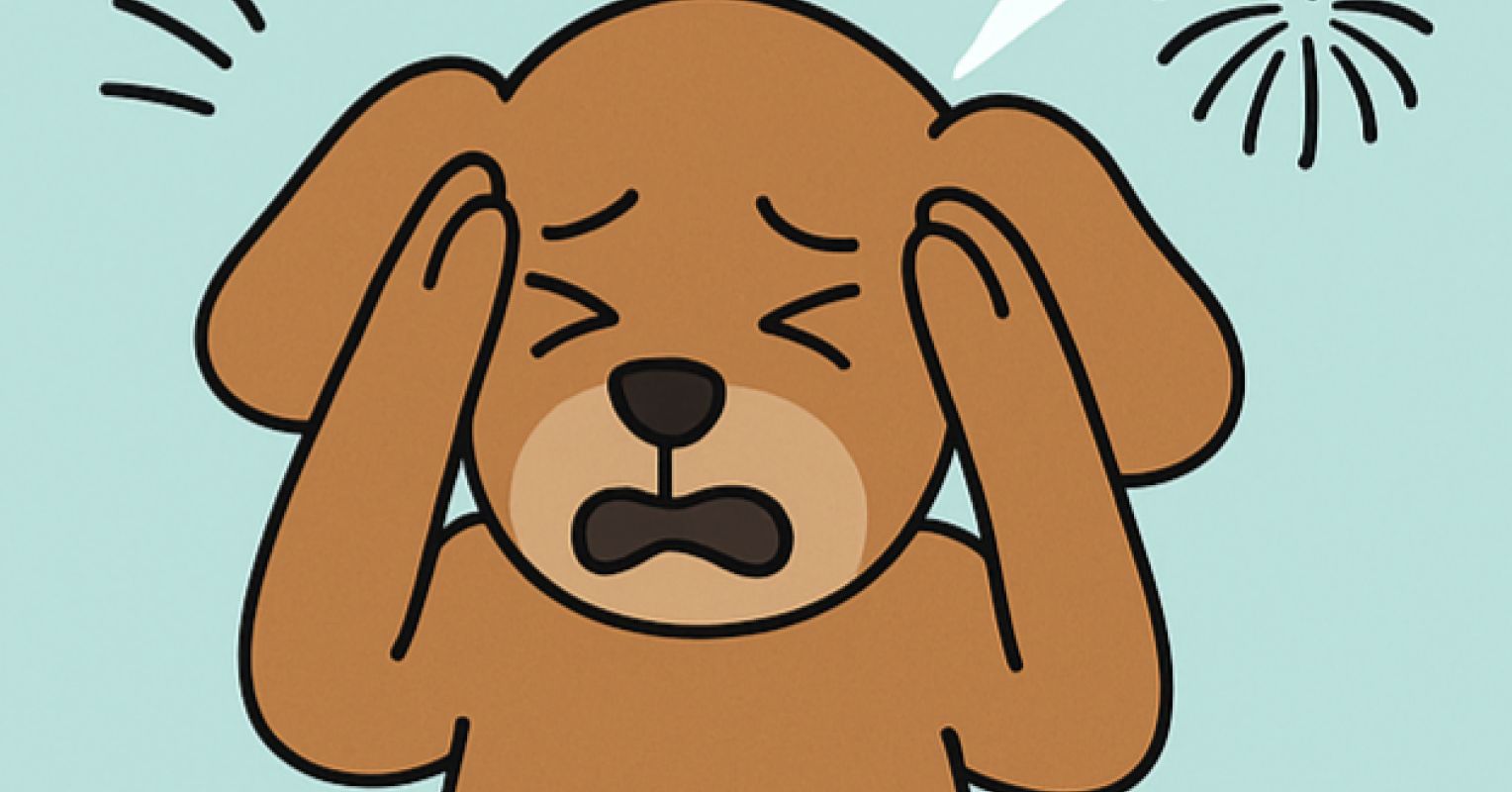
Noise is an unavoidable part of modern life. We hear it, we adapt, we carry on. But for our canine companions, many of these everyday sounds are far from benign. Although it is well known that thunder and fireworks will send many dogs into a frenzy, it turns out that a broad range of human, household, and neighborhood sounds can cause our dogs distress. A recent pre-proof journal article, “Turn the Volume Down: Noise Hypersensitivity in Dogs,” (Chin et al. 2025) takes an in-depth look at how various noises, beyond just thunder and fireworks, can profoundly affect dogs—and what might be making some dogs more vulnerable than others.
As someone who has long been interested in the ethics of our relationship with animals, I found this study to be both enlightening and deeply concerning. Dogs, who share our homes and often our beds, are continually being subjected to a soundscape that can be frightening and distressing, often without their human companions fully understanding the toll it takes. This research makes an important contribution to our understanding of canine welfare in an increasingly noisy world.
Sounds That Startle—and Terrify
The study, which collected data globally through an online survey disseminated via social media and veterinary clinics, aimed to investigate which sounds evoke the most negative reactions in dogs, and to identify possible risk factors associated with this sensitivity. Over 80% of respondents were female, and the survey captured a diverse demographic of dog owners.
The study identified a wide range of sounds that dogs found distressing, and grouped them into three categories: Aversive Sounds (AS), Environmental Sounds (ES), and Human Sounds (HS). Not surprisingly, fireworks and thunderstorms ranked at the top of the list of aversive sounds (AS). These events are loud, unpredictable, and often prolonged—making them a perfect storm of stress-inducing stimuli.
Vacuum cleaners, construction noise, and sirens were among the top offenders in the environmental sounds category. Human sounds and noises like yelling, clapping, laughter, and even sneezing also made the list. (My dog Bella has had a life-long aversion to human sneezing. Whenever someone sneezes, she cowers and pulls back her ears.) One particularly telling detail: Even seemingly minor sounds, like mobile phone alerts or finger snapping, were enough to provoke anxiety in some dogs. The reactions of dogs to noise varied widely—from mild withdrawal to full-blown panic.
Risk Factors: Who Is Most at Risk?
Why are some dogs more reactive than others? The study found several key factors that increase the likelihood of noise hypersensitivity in dogs.
Age was a significant factor. Senior dogs (ages 7–11) showed a marked increase in reactions to aversive sounds. This may be due to age-related hearing loss or sensory processing changes, which can make unfamiliar or sudden sounds more jarring.
Anxiety status was another crucial variable. Dogs diagnosed with anxiety were far more reactive to both aversive and environmental Sounds. This isn’t terribly surprising, as we know that anxiety amplifies stress responses, but it’s a reminder of how deeply intertwined psychological health and environmental stressors can be.
Breed and size also played a role. Smaller dogs were more likely to be noise sensitive. Although the mechanisms behind this correlation are not fully understood, it’s plausible that differences in auditory processing, or simply the perception of vulnerability, may contribute.
The study also found intriguing patterns related to owner demographics. Dogs owned by women and older individuals tended to be more reactive to environmental sounds. Whether this is a reflection of actual increased sensitivity in the dogs, or heightened observation and reporting by the owners, is not yet clear—but it suggests that the human-dog relationship itself might mediate how noise sensitivity is experienced and interpreted.
Neutering status and early life experiences were noted as potential risk factors, though the findings here were less definitive. Still, the possibility that genetics and formative experiences could shape a dog’s sensitivity to noise deserves further attention.
Another important consideration not explored in this current study but of relevance to dog guardians is the link between pain and noise sensitivities. A 2018 study published in Frontiers in Veterinary Science (Fagundes et al. 2018) suggests a link between pain and noise sensitivities and caution that dogs with noise sensitivities be assessed for pain by a veterinarian.
The Ethics of Listening
We owe it to the animals we live with to pay attention to their experiences—and that includes the sounds that affect them. While many humans can ignore or habituate to the whir of a vacuum or the bang of a car door, dogs often cannot. Their hearing is more acute and their instincts more finely tuned, and they have no control over their auditory environment.
As this study makes clear, noise hypersensitivity is not a niche issue; it’s a significant welfare concern. A dog who reacts in fear to everyday sounds is not just being “dramatic.” They are experiencing genuine distress, which can lead to chronic anxiety, behavioral problems, and a diminished quality of life.
There are practical steps we can take: reducing exposure to known triggers, using positive reinforcement to build resilience, and consulting veterinary behaviorists for dogs with severe sensitivities. But perhaps the most important step is simply to recognize that dogs hear the world differently than we do—and that this matters.
Looking Ahead
This study, though still in its pre-proof stage, offers valuable insights that can inform better care and compassion. As more definitive research emerges, we will hopefully be better equipped to identify at-risk dogs early and implement interventions that help them live more peacefully in our noisy human world.
If you share your life with a dog, consider taking a moment today to really listen—not just to the world around you, but to how your dog responds to it. Their ears are telling them a story we might not hear, but we can learn to understand it, if we choose to listen.
This post was originally published on this site be sure to check out more of their content.







































